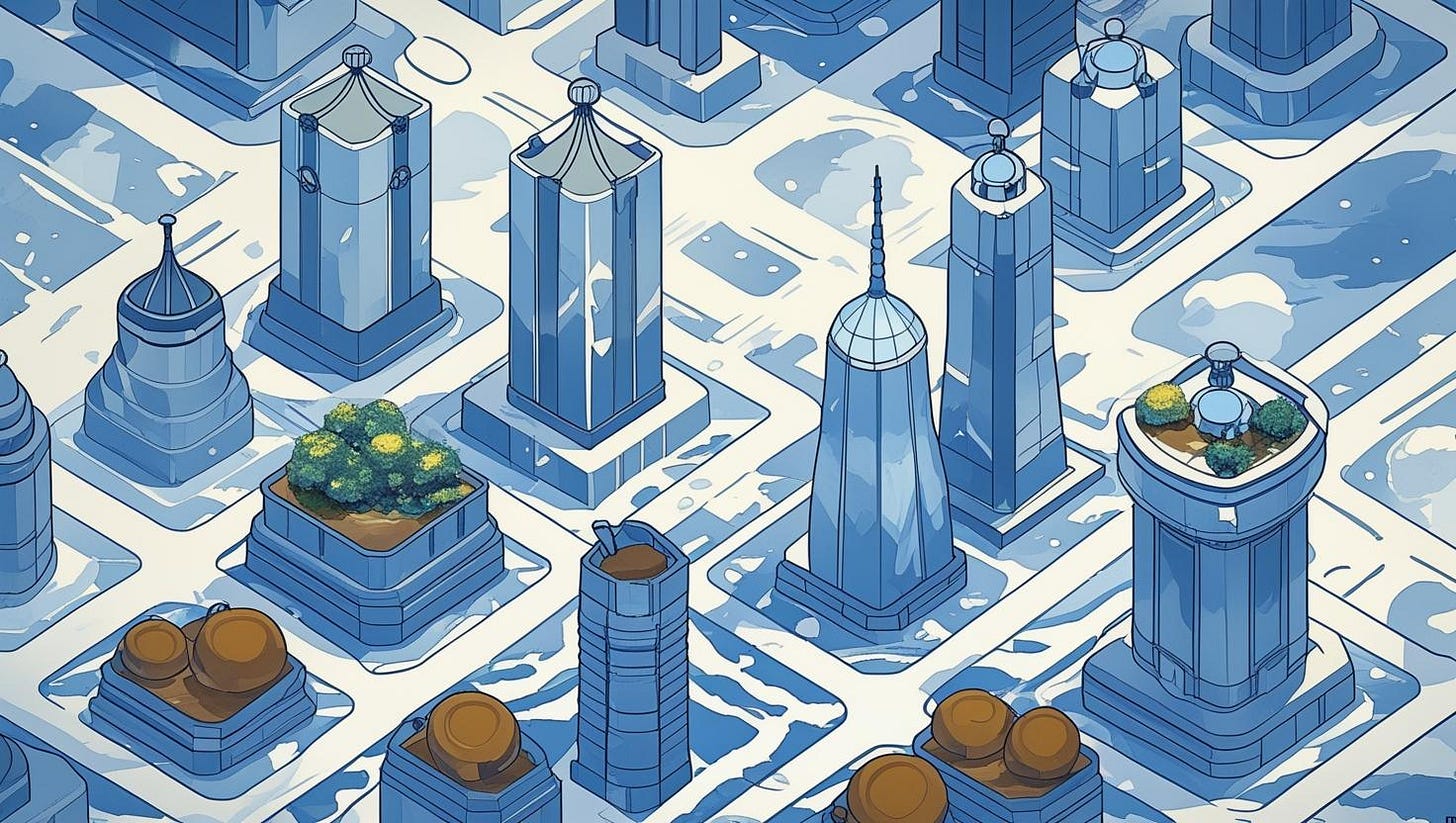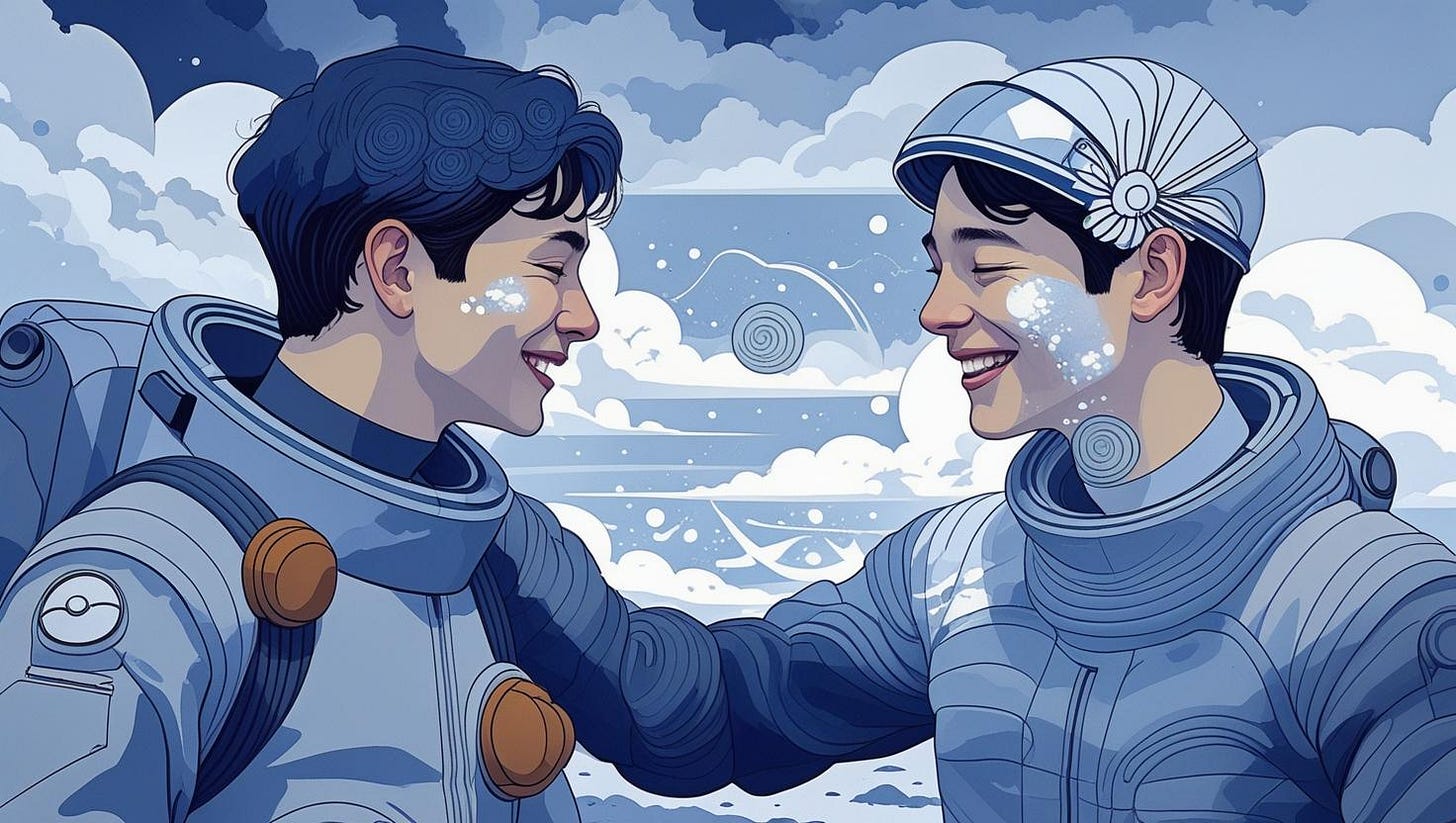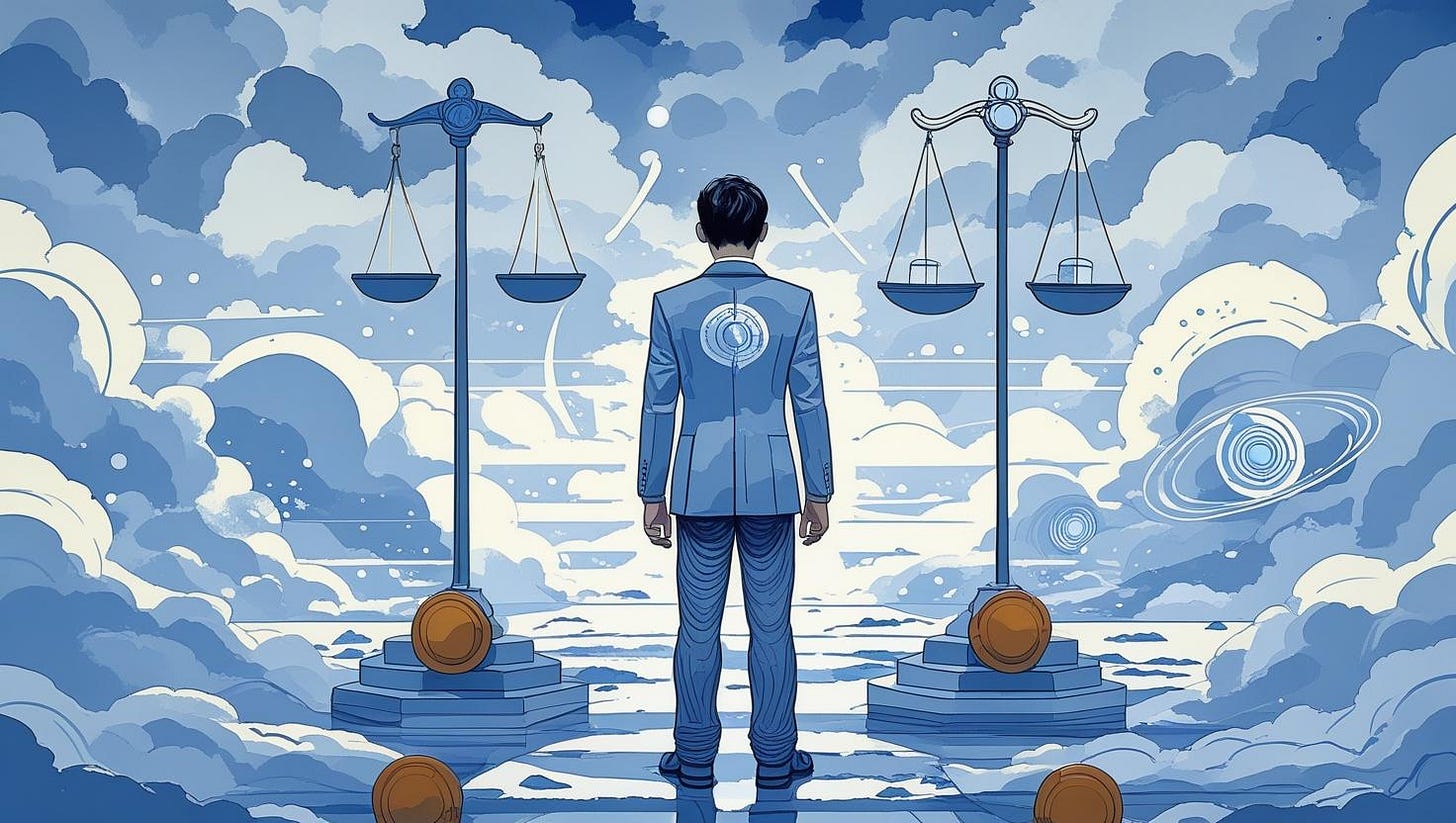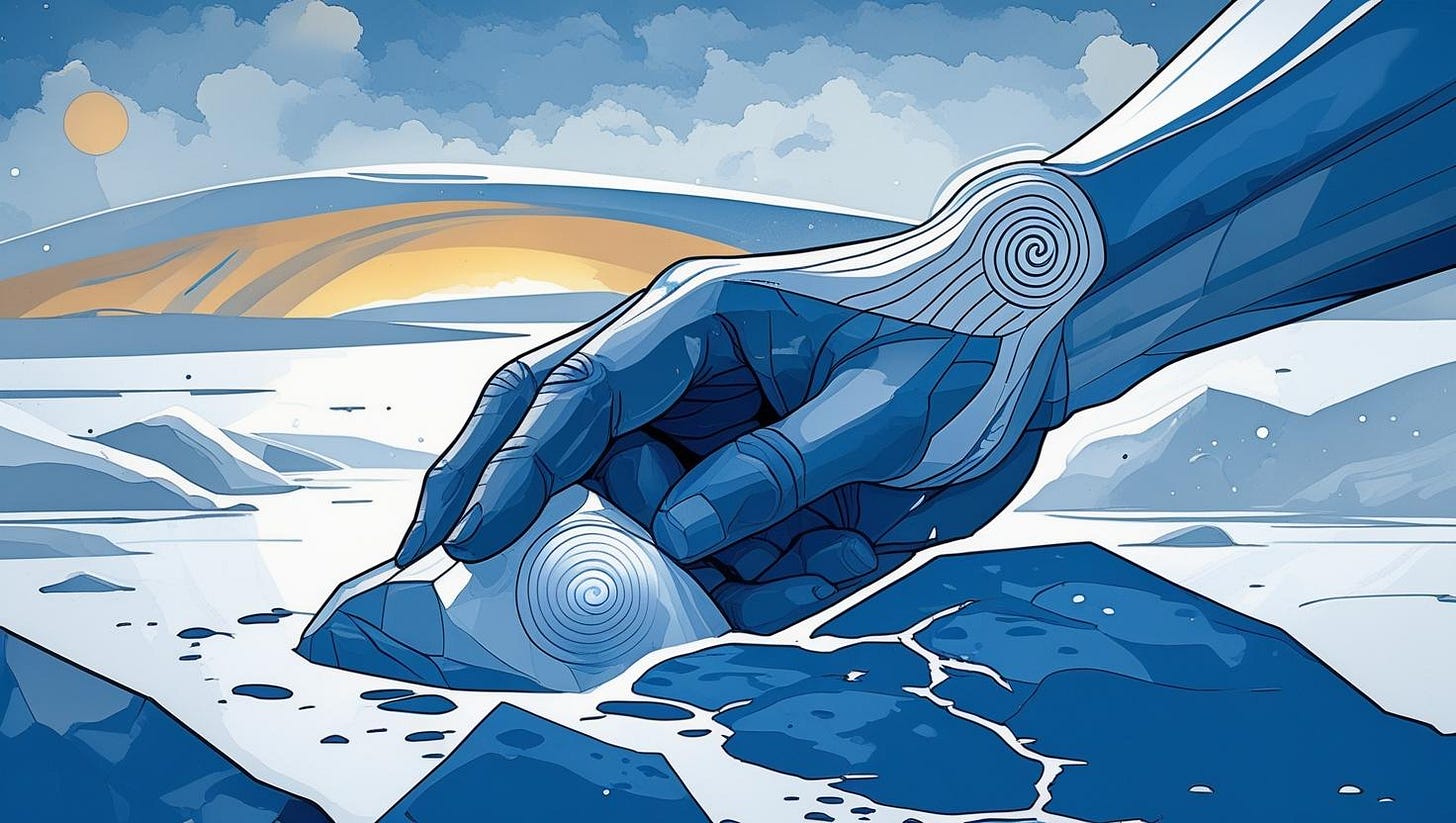The Case for Accelerating Physics Discovery
A Moral, Philosophical, and Economic Perspective
I recently landed in Cambridge, Massachusetts to begin my next chapter of AI for Science, with a deeper focus on accelerating physics research. In this post, I lay out the moral, philosophical, and economic case for accelerating physics discovery (warning: it gets trippy 🤡). Let’s go.
Consider, for a moment, the following scenarios:
Scenario 1: You’ve been playing a world-building video game like SimCity or Minecraft. You’ve invested considerable time and effort developing your now thriving city. As usual, you boot up the game to unwind after work or school. Today, however, the home screen catches your eye.
Rather than your single saved profile, you see seemingly infinite copies of it. Clicking into a few at random, you discover different versions of the world you created, each slightly modified, but all unmistakably designed by you.
Scenario 2: Imagine you’re playing the same game, but this time you don’t encounter the duplicate profile “bug.” The first time you play the game, after 20 hours of following your instincts, you build a world you’re really proud of. Called “New Block City,” it features skyscrapers with glass facades and rooftop gardens. And a happening entertainment district called “Pluto Plaza,” named after your childhood pup.
Wanting another go, you delete your world and start from scratch. You lose track of time as you lean in to building something that expresses your creativity. After another 20 hours, you zoom out to admire your progress and notice something peculiar: this world is eerily similar to the last. Upon closer inspection, your heart jumps: you’ve built an exact replica.
Brushing this off as coincidence, you delete your world again and rebuild from scratch. Yet each time, after 20 hours, you step back, and there it is: New Block City, featuring Pluto Plaza. Just like last time. And the time before that.
Scenario 3: Imagine you are the duplicated profile – and repeatedly rebuilding New Block City is your lived experience.
Into The Wilderness
One of humanity’s hallmarks is our ability to think beyond immediate needs and grapple with larger questions about ourselves and the nature of reality.
In the American education system, we often learn popular takes on these questions from a Western perspective. For example, René Descartes’ declaration, “I think therefore I am,” arguing that our capacity for thought is proof of existence, even if our senses deceive us. Or Plato’s Allegory of the Cave, which suggests that if all we’ve ever seen are shadows cast on a wall, we might mistake those illusions for reality itself.
Elsewhere in the world, we may be more exposed to the teachings of Zhuangzi, a Chinese philosopher, who after a deep slumber wondered, “Am I Zhuangzi who dreamed I was a butterfly, or a butterfly now dreaming I am Zhuangzi?” Or to Hinduism’s sacred texts, the Upanishads, which teach that consciousness plays a fundamental role in how we perceive reality.
A major breakthrough has been our ability to pair these philosophical questions with experimentally proven theories. Two relevant areas being the study of consciousness, through neuroscience, and the study of the world around us, through physics.
The advances we’ve made in these areas have been breathtaking. Rooted in a classical worldview, where time was considered absolute, our understanding lurched forward when Einstein revealed that time itself is relative and dependent on relative velocity and the forces exerted by gravitational fields. We took another huge step forward with the development of quantum mechanics, which revealed that physical systems are described by wave functions that encode probabilities, and which likely “collapse” upon observation and/or continuously branch into parallel worlds.
These discoveries gave birth to a new generation of practical technologies, from nuclear power plants that generate electricity, to accurate GPS clocks that help us navigate to our friend’s birthday party.
Yet they’ve also revealed how unintuitive reality is compared to our lived experience: a twin returning from space younger than the one who stayed on Earth? A single photon of light interfering with itself? And raised new scientific, and I would argue, spiritual questions.
If the wave-function of the universe does indeed evolve into many branching realities, this means that since you started reading this post, countless versions of you have split into different branches of the universe, each experiencing a distinct path of events. You are one of your saved gaming profiles. And each separate profile is another fully-formed, conscious version of you, skin, bone and spirit.
Or, per Einstein’s theory of relativity, there is no single universal “now,” only different slices of spacetime seen by different observers and dependent on their motion. Some scientists and philosophers interpret this to mean that past, present, and future must all equally exist in a “block universe.” The version of you who recently started reading this blog post exists as a fixed part of spacetime, just as the version reading this sentence exists now, each experiencing its own moment as the present, and ultimately rooted in a single, unchangeable story. Hello Pluto Plaza.
The Moral Opportunity
A few years ago, I was moved by an article about a restorative justice program in the US. In it, the parents of a child who was murdered by a young man chose to build a relationship with their child’s assailant, setting him on a path toward reform rather than seeking the death penalty. To me, it was a powerful example of the belief that we are born inherently good-hearted, shaped into decisions that help or harm others by social and physiological forces bigger than ourselves. It’s a belief mirrored in the teachings of many faiths and reflected in the US justice system, which begins with a presumption of innocence.
If each of our life choices is laser etched into the “DVD movie” of our existence, as implied by the block universe theory, what does that imply for our system of justice? If the future is deterministic, how might we design systems that account for an apparent lack of free will?
Or consider the interpretation of quantum physics in which infinite copies of each of us exist in separate realities. In the sum total of realities, each of us is undoubtedly both villain and victim, victor and vanquished. Does our empathy extend to those other selves? Do they hold a place in our thoughts and prayers? Or do we simply ignore them because they exist in different - albeit equally real - realities? How might we “update” our spiritual practices to reflect such deeper truths? (Shout-out to Emily Qureshi-Hurst, who recently penned the book: Salvation in the Block Universe).
The Economic Opportunity
Materials, Energy, and More
The technological opportunities arising from progress in physics are equally staggering. As we work to develop better energy storage systems or room-temperature superconductors, one of the largest barriers is the computational intractability of formulating the right chemistries.
There are roughly 90 naturally occurring elements on the periodic table. Choosing just six from a pool of 30 viable ones yields over half a million possible combinations. These calculations are intractable for even our most powerful classical computers, but far more manageable for a computer that leverages the properties of quantum physics to conduct massively parallel computations.
Conversely, losing our edge in these fields could make secure communications, banking, and other “password-protected” services vulnerable to brute-force hacking. And we risk missing out on the commercialization of transformative technologies that could arise from harnessing new physics: from more accurate sensors for medical imaging, to better controlled nuclear fusion for plentiful, cleaner energy.
Artificial Superintelligence
Despite all the progress LLMs and generative AI have made in recent years, they still struggle to extrapolate beyond their training data to new, unseen problems. It’s these types of insights that have driven some of our biggest breakthroughs as a species and, so far, our AI systems seem to fall short.
Designing systems that can make tangible progress in theoretical physics, whether through better analysis of existing data from high-energy physics, astronomy, and self-driving labs, or by leaping from existing theories to new ideas, might be the real “Turing test” for the superintelligent systems many labs are developing.
Progress also flows in the other direction. Many of today’s most impressive examples of generative AI, like image synthesis and protein prediction, are rooted in well-established physics methodologies, such as modeling the diffusion of gases in thermodynamics. What other physics techniques might “translate” to AI if further developed?
Building Community
Opportunities to simultaneously advance deeply philosophical and economically impactful questions are rare. It’s for this reason that I made the leap into AI for Science, with a special focus on physics.
The years I spent getting my MBA at MIT Sloan were in retrospect deeply impactful in planting the seeds for my journey. What I loved about my time at Sloan was the encouragement we received to get out of our building and build relationships with innovators and scientists across campus – to become partners in unlocking the promise of their ideas and making them real.
As I begin this next chapter, I’m excited to do it from the Cambridge/MIT ecosystem and connect and collaborate with the many excellent people and organizations within and around it, be it the MIT Center for Theoretical Physics, the Kavli Institute, NSF’s Institute for AI and Fundamental Interactions, or places like the Lincoln Lab that are putting theory into practice.
If you know folks at these organizations – or others in the Cambridge/Boston ecosystem who I should connect with – please drop me a line! And, as always, I would love to hear about your own projects and interests at the intersection of AI and physics.
Onward.
- Nabil
Enjoying this read? Subscribe for more and share it with friends eager to accelerate scientific discovery.











